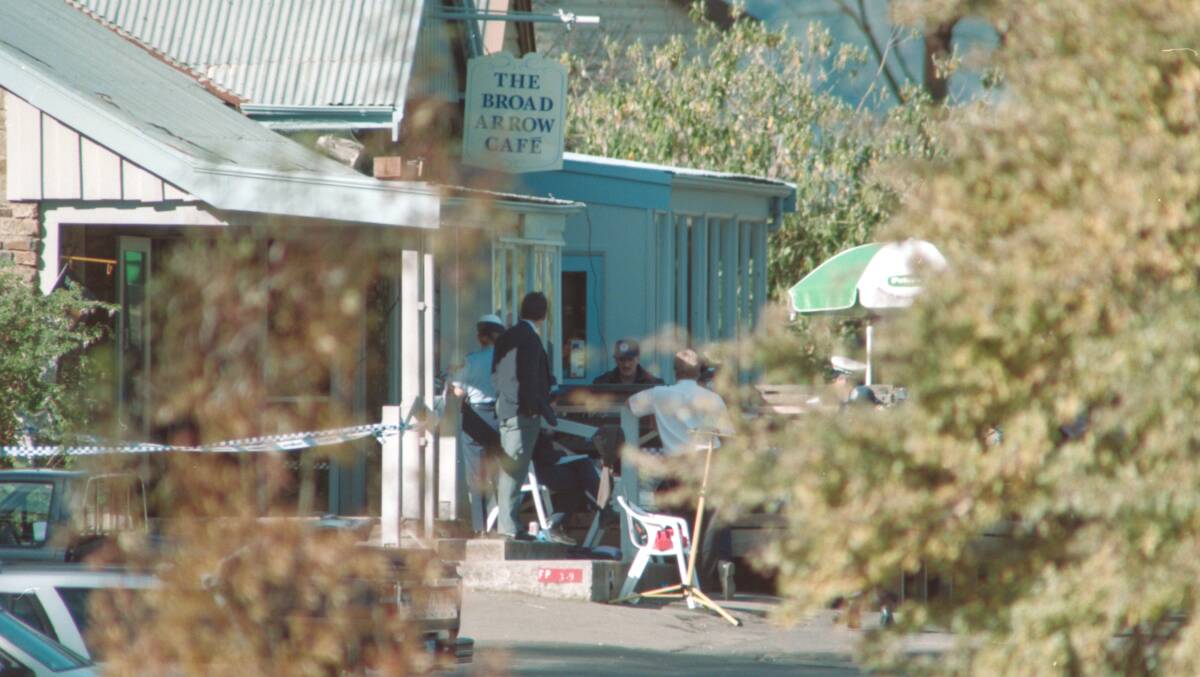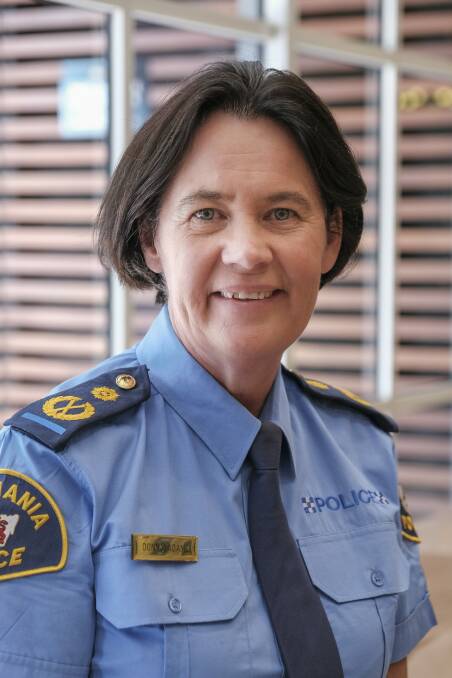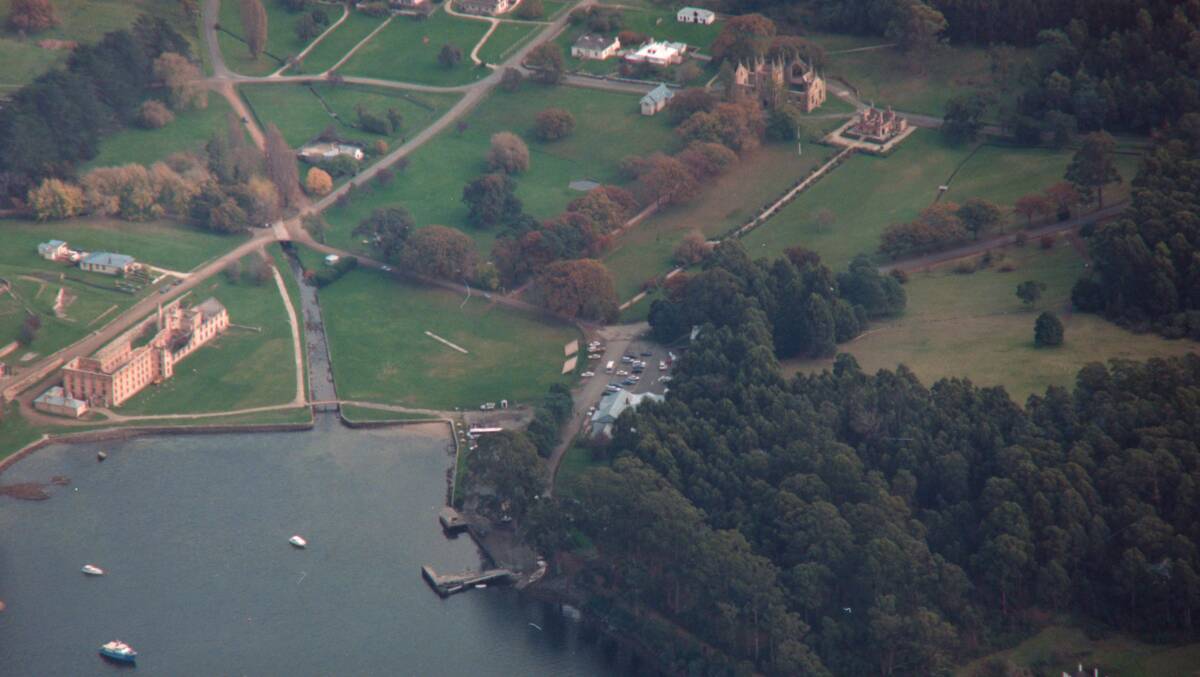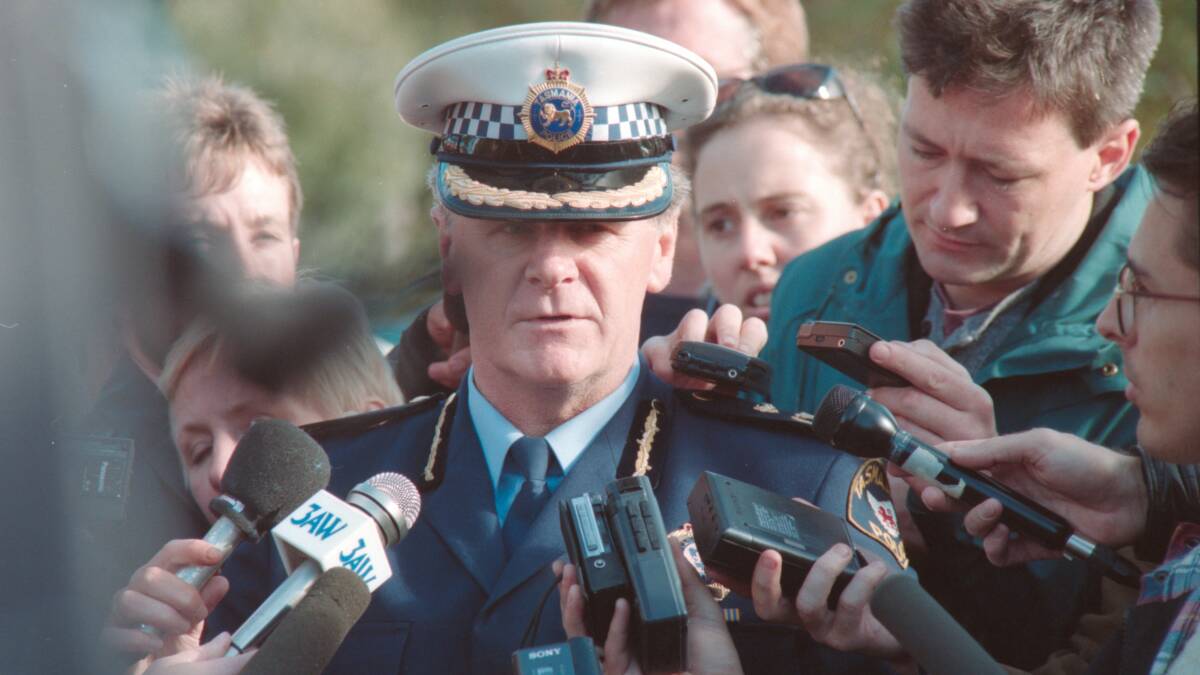
In the early hours of April 29, 1996, police arrested a mass murderer after a 20-hour standoff near Port Arthur.
Subscribe now for unlimited access.
$0/
(min cost $0)
or signup to continue reading
The man, who The Examiner has decided not to name, had killed 35 people and injured 23 more the day prior. To this day, those involved in the massacre response were impacted by what they witnessed.
In the second, and final part of an anniversary series, a detective who was sent to the crime scene, an officer who suffers severe post traumatic stress disorder from the events, a photographer called to document the scene, and another officer who is now working to raise funds in memory of two victims share their stories.
Disclaimer: This story contains descriptions of violence and discusses Post-traumatic stress disorder. It might not be suitable for all readers. Discretion is advised.
THE AFTERMATH
It was a shift Tasmania Police's current acting Deputy Commissioner Donna Adams would never forget.
A detective senior constable at the time, she travelled to the scene on April 28, along with other CIB investigators.

"Just listening to the police radio, and the frenetic pace of calls to the police radio operators with information coming in about the shots that had been fired, people that had been injured, the speculation around the number of deaths, that brought with it a real level of concern and anxiety as we were travelling down there about what it was we were going to be confronted with when we arrived," she recalled.
She went on to spend five days at Port Arthur, securing different crime scenes.
"It was horrific, I have seen a lot of death in my role as a police officer, but the images from those various crime scenes will continue to haunt me and no doubt a lot of others," she said.
"It is something you can't imagine and I won't describe what is vivid in my mind because I don't think people need to try and conceptualise what we were confronted with."
As police worked tirelessly to gather evidence, The Examiner's photographer Neil Richardson was flying over the scenes, documenting what later became one of the most significant days in Tasmania's history.
It was an ordinary Sunday morning for him before the tragedy unfolded. He had spent the day with his daughter, taking her to a music lesson, before having lunch at Salamanca in Hobart. As they were driving home, he saw police cars speeding past - one after another.
Shortly after, he received a call from his editor.

"He said this will be the biggest story we have ever covered," Mr Richardson recalled.
"The next day I was in a plane, going over the site, when they had the shooter bailed up in Seascape Cottage."
Once media had clearance to enter the site, Mr Richardson said the atmosphere was eerie.
I have covered a lot of murder scenes, but this was on another level.
- Neil Richardson
While the topic of Port Arthur remained a sensitive one, both in the police department and the broader community, acting Deputy Commissioner Adams said it was important to educate younger generations on the history of Australia's firearms legislation.
The National Firearms Agreement was highly controversial at the time, and was passed 12 days after the massacre. It was the result of all the states and territories coming together to place strict controls on automatic and semi-automatic weapons, and saw the government spend millions of dollars on buying back those weapons that were no longer legal.
"That was something positive that came out of such a horror situation," she said.
"The firearms legislation that Australia has as a country is really world-leading, the rigor around applying for these semi-automatic firearms is strong, and I think is the envy of a lot of the countries across the world."
It had also changed the way police prepared for large scale incidents, and how the department supported its officers.

"Before this incident people may have believed that a mass shooting such as this wouldn't happen in Tasmania, that Tasmania would be immune, and that these were things you would see internationally, and certainly you see them in the United States often, but we need to be prepared as a police agency to respond to these situations," acting Deputy Commissioner Adams said.
"The Port Arthur situation was also the beginning of the amount of work and research and resourcing that we have put into our wellbeing unit, it really stems from an incident such as this."
THE IMPACT
The direct effect on police and their mental health that acting Deputy Commissioner Adams spoke of was something retired officer Pat Allen was all too familiar with.
He was one of two officers trapped in a ditch for more than eight hours while shots were being fired during the standoff with the offender at Seascape Cottage.

But he said despite strong support for police immediately after the situation, more needed to be done to help those still suffering.
And for Mr Allen personally, the events that unfolded at Port Arthur had "completely changed" him.
To this day, he can still name the victims in alphabetical order.
Suffering from post traumatic stress disorder, the flashbacks, nightmares, and changes to his personality "destroyed his family".
As much as you want to shake it out of your head, you just can't do it, and every time you hear Port Arthur, or films being made, it all comes pouring back.
- Pat Allen
"Over time ... I became someone I completely hated, and most other people hated.
"PTSD has been a constant thing in my life, I have got control of it at the moment, but it doesn't take much for me to completely overreact to something.
"It is the constant lack of sleep, I haven't slept properly since 1996. It is going to rule my life until the day I die."
While the simple mention of Port Arthur could trigger his PTSD, Mr Allen said it still needed to be talked about.
"It's to remember firstly the victims ... we have got to remember them, and to remember the people who were there, the ambulance volunteers, anyone that was there.
"As long as we don't mention that thing's name, let's take the New Zealand approach, we won't remember him, we will remember the fact it happened and it changed the country, forever.
"You can't say good came out of it, but some positive changes were made because of it."
MOVING FORWARD
A 16-year-veteran of the Tasmanian Special Operations Group, then tactical commander Jim Morrison was repairing a fence at his property near Hobart when he was first contacted about the incident.
Shortly after he was on a flight to Port Arthur.
He was confronted by the hostage situation at Seascape Cottage, and was ultimately involved in the 20-hour long siege with the shooter.

To this day, he remembers the details of that operation vividly, but said his decision to speak publicly about it was not for his own benefit.
Returning to Port Arthur on the anniversary this year for the first time in 25 years, he wanted to pay tribute to the victims, but also the first responders, and volunteers who were there in 1996.
"There are certain things that I'll take away and will never reveal to anyone, apart from those that I served with during that 20-plus hours at Seascape," he said.
The true heroes are the first responders that went to the penitentiary site and dealt with that carnage, and that horrific tragedy that occurred.
- Jim Morrison
The ex-cop recently joined forces with the Alannah and Madeline Foundation, which was setup in memory of two young girls, aged six and three, who were killed alongside their mother during the shootings.
He just completed the First Responders Walk, which saw him, and two former Victoria Police SOG members who were involved in the Port Arthur operation, trek from Melbourne to Hobart raising funds for the foundation.
"I have deliberately stayed away from the Tasman Peninsula," Mr Morrison said.
But he chose to return in memory of Alannah and Madeline.
Beyond raising awareness of what occurred on that dark day in 1996, and creating a safer environment for children, speaking out was also about maintaining support for the country's firearms laws, he said.
"I turned my back on events and tried to keep it to myself because it does nothing to the victims and the way that they're dealing with grief and trauma for others to speak out. But I guess I'm doing this now because, you know, most Australians support a strong gun safety framework and we must collectively do everything we can to avoid a US style gun culture, and another Port Arthur."
Read the first part of the two-part anniversary series here.
- If this story has impacted you in any way, help is available through Beyond Blue by calling 1300 22 4636



